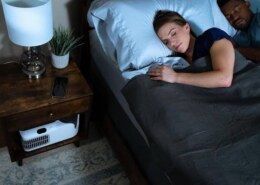In our hyper-connected, always-on world, sleep is often sacrificed in the name of productivity. Yet, the importance of quality sleep for mental clarity, physical health, and emotional well-being has never been clearer. As awareness grows, so does the market for sleep technology—gadgets and apps promising deeper rest, easier wake-ups, and better sleep habits. But can these devices truly improve your rest, or are they just high-tech bedtime distractions?
The Rise of Sleep Tech
From smart mattresses and sleep trackers to white noise machines and wearable EEG headbands, sleep tech has become a booming industry. Global sales in this sector are projected to reach over $40 billion by 2027. The appeal is easy to understand: with a device, you can track your sleep cycles, identify disruptions, and receive personalized advice to optimize rest—all without needing a sleep lab.
What Kinds of Devices Are Out There?
-
Sleep Trackers
Devices like the Oura Ring, Fitbit, and Apple Watch monitor heart rate, movement, and body temperature to estimate how long you spend in each sleep stage. Some offer “readiness scores” or suggest ideal bedtimes. -
Smart Mattresses and Pillows
These products can adjust firmness, regulate temperature, and even vibrate to gently wake you up during lighter sleep phases. Some can detect snoring and elevate your head slightly to reduce it. -
White Noise and Sound Therapy
Machines and apps that play white noise, pink noise, or calming sounds like rainfall aim to mask disruptive noises and promote relaxation. -
Light-Based Devices
Smart lamps and sunrise alarm clocks simulate natural light to help regulate your circadian rhythm, making it easier to wake up feeling refreshed. -
Brain-Sensing Headbands
More advanced headsets use EEG sensors to monitor brain waves and offer real-time audio feedback to help you relax into sleep or even train your brain for better rest.
Do These Devices Actually Work?
The science is mixed. Sleep trackers can provide helpful data, but consumer-grade devices often fall short of clinical accuracy. A 2019 study published in Sleep found that some wearables tend to overestimate sleep duration and underestimate wakefulness. Still, they can help users develop better sleep hygiene by identifying patterns and encouraging consistency.
White noise machines and light therapy devices have stronger evidence behind them. Multiple studies suggest that sound therapy can improve sleep quality, particularly in noisy environments. Similarly, light exposure in the morning has been shown to help regulate sleep-wake cycles, especially for those with insomnia or delayed sleep phase disorders.
However, experts caution that relying too heavily on data or devices can backfire. “Orthosomnia”—a type of insomnia driven by obsession over sleep tracking data—is an emerging issue among wearables users. Paradoxically, the stress of trying to sleep perfectly may lead to worse outcomes.
Tips for Using Sleep Tech Wisely
-
Don’t obsess over numbers. Use sleep data as a general guide, not a diagnosis.
-
Combine tech with good sleep hygiene. Go to bed and wake up at consistent times, limit screens before bed, and create a calm environment.
-
Try different tools. What works for one person may not work for another. It may take trial and error to find the right fit.
-
Consult a professional. If you’re experiencing chronic sleep issues, speak to a sleep specialist rather than relying solely on gadgets.
The Bottom Line
Sleep tech has the potential to support healthier sleep, especially when used thoughtfully and in combination with lifestyle changes. While not a magic fix, these tools can raise awareness of your habits and help foster better routines. As technology continues to evolve, we may soon see more accurate, personalized, and non-invasive ways to improve one of the most important pillars of health: a good night’s sleep.

